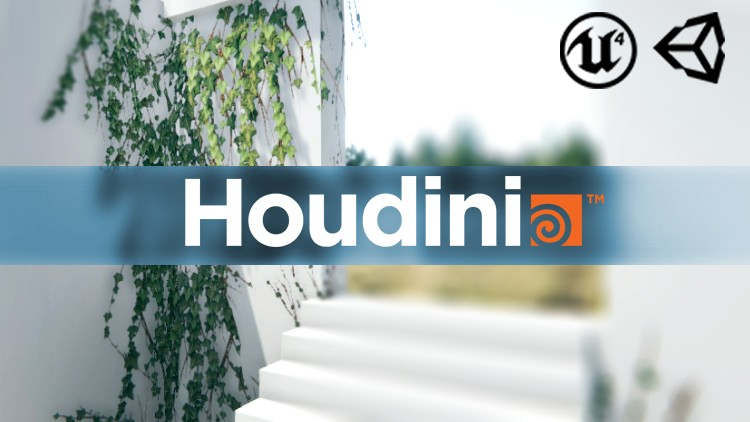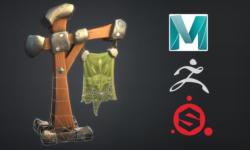Houdini Game Art – Create foliage for Games with Houdini
Release date:2018, May 7
Duration:02 h 52 m
Author:Alexandre Stroukoff
Skill level:Intermediate
Language:English
Exercise files:Yes
What Will I Learn?
Create a useful ivy generator than can be expanded upon
How to use Houdini to complete a task faster in a production environment
Understanding how to control objects copy in Houdini (Orientation attributes)
Create Realtime foliage meshes
Requirements
Houdini 16.5+ (FREE apprentice version) – Houdini 17 Works too
Beginner Level in Houdini
Substance Designer knowledge, but Photoshop works too.
3D Modeling package (3ds Max, Maya, Blender…)
Description
This course will take you through the step necessary to create realtime foliage using Houdini.
Starting from reference pictures, we will use Houdini to create a useful Ivy Tool that could be expanded into a more Generic Vegetation Tool.
The main focus of this course will be HOUDINI. You don’t need an advanced knowledge, this course is great for Houdini beginners who want practice procedural modeling in a real production way instead of doing more abstract tutorials. You can use this course as an excuse to finish your first Houdini project, that will take you from beginner to a more intermediate skill level with Houdini.
I will show a typical production workflow from the “real world” that you can use directly in a video game production. We will take shortcuts, and do thing as fast as possible, the goal being the end result.
By the end you should have a idea of how you can integrate Houdini in your video game art pipeline, and have some cool assets you can show off in Unreal or Unity or any engine, and maybe, this will be your first game art assets made with the help of Houdini !
You wil be provided with the final Houdini file used in this tutorial.
NOTE : Even though I use Substance Designer and 3ds Max in this tutorial, their are not mandatory, and can be easily replaced other similar software.
Who is the target audience?
You know a bit of Houdini but would like finally use it in a concrete way
You are an artist who want to use Houdini procedural capabilities to get the job done faster
Game Artists curious about adding a bit of proceduralism in their workflow





 Channel
Channel





